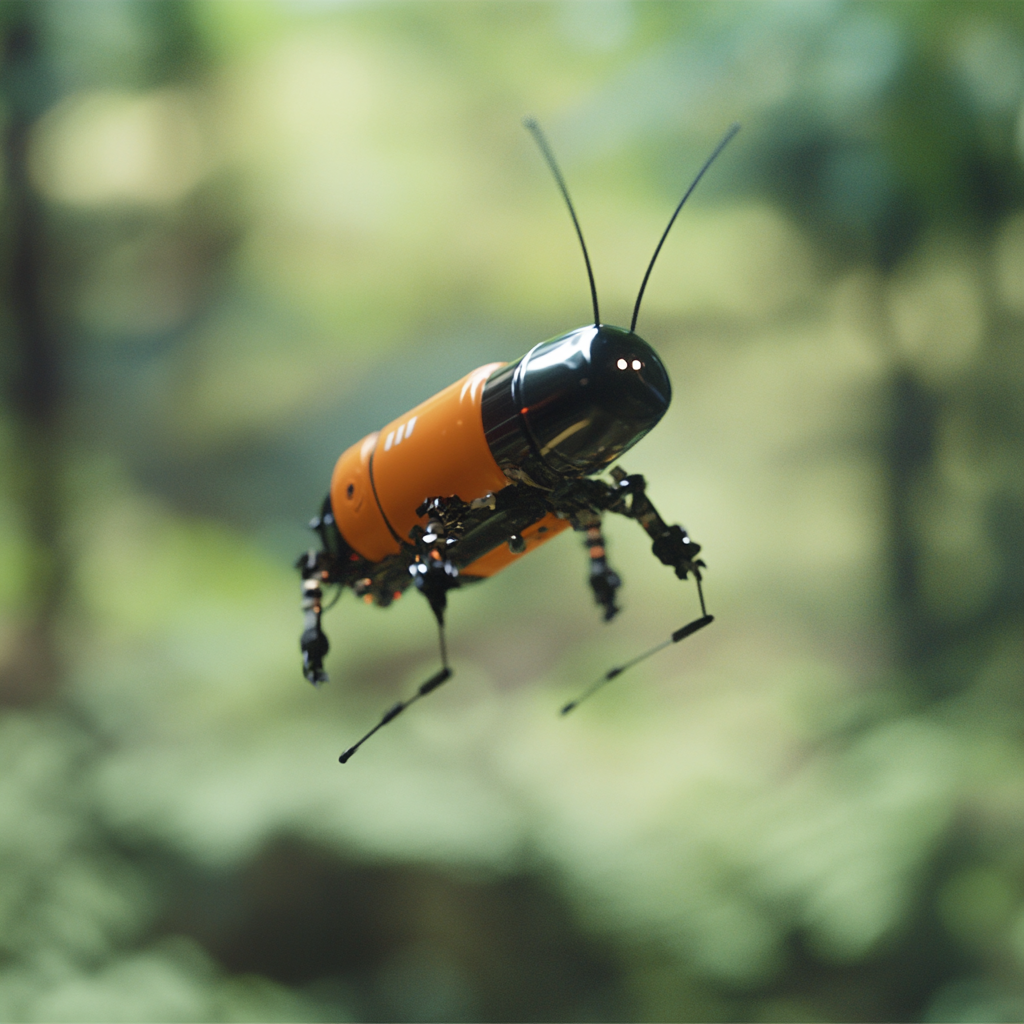
A springtail-like jumping robot: Diminutive device can leap 23 times its body length
In the enchanting landscape of robotics, where innovation thrives on the rich tapestry of nature's blueprints, a fascinating marvel has emerged from the minds at Harvard University – behold the springtail-inspired jumping robot. This compact contraption is not just any run-of-the-mill robotic wonder; it defies gravity with a spectacular jump that covers an astonishing 23 times its own body length. Talk about a leap of ambition!
Let’s take a moment to appreciate the source of this robotic inspiration: the humble springtail. These pint-sized insects, often overlooked, boast an extraordinary ability to vault themselves through the air in the direst of circumstances. Imagine a miniature acrobat that resides in your garden or under a leaf – that’s your everyday springtail, utilizing its magic wand of sorts, the "furcula." This forked, tail-like appendage acts like a miniature catapult, flinging the insect through space to evade predators. A master of escapology, if you will, and this incredible talent has caught the attention of the visionary scientists at Harvard's John A. Paulson School of Engineering and Applied Sciences.
Now, what does this mean for our friendly neighborhood robot? Enter the Harvard Ambulatory Microrobot, affectionately known as HAMR. Initially modeled after the tenacious cockroach—nature’s ultimate survivor—HAMR has undergone a fascinating transformation. It has undergone a cold fusion of biomechanics and robotics by donning its very own robotic furcula, mirroring our jumping insect companions. With this innovation, it has now leapt into new heights (quite literally) and become a champion of agility in the robotic realm.
The secret sauce behind this dazzling jump lies in a nifty technique called latch-mediated spring actuation. Sounds complicated, right? But it’s essentially about storing energy in the robot's specially designed elastic furcula, then releasing that pent-up energy in a swift, explosive motion. Picture it akin to loading a slingshot and letting it go – bam! The principle resonates not just in our beloved jumping robots, but in the animal kingdom too. Chameleons flick out their tongues, and mantis shrimp unleash punches that could put your average heavyweight boxer to shame, all thanks to similar spring-loaded mechanics.
Now, let’s get a bit technical. This tiny marvel of engineering weighs about as much as your average paper clip – yes, that’s around a mere 2 grams! But don’t let its lightweight fool you; it’s packed with capabilities that make it more than just a toy. This little gadget can walk, jump, climb, strike – oh yes, it can even pick objects up! With a jump height reaching 1.4 meters (or approximately 4.5 feet for those still on imperial measures), it’s a formidable player in both the micro-robotics field and the game of life. It’s designed to conquer terrains where humans would struggle, making it an asset for exploration in tight or difficult spaces.
How did they achieve such a feat? Advanced microfabrication techniques are at play, partnered with meticulous computer simulations. The researchers utilized cutting-edge technology and simulations to fine-tune the design of HAMR, ensuring it lands with precision every time it leaps like a gymnast on a springboard. This attention to detail guarantees that our robot won't end up faceplanting every time it makes an attempt to flaunt its acrobatic prowess – no one wants to be that robot.
Now, what awaits us in the future with these diminutive jumping maestros? The potential applications are thrilling and vast. Imagine these springtail-inspired bots delving into hard-to-reach spaces for search and rescue operations or navigating through natural environments to gather data without the disruption caused by human presence. Their unique blend of locomotion and jumping makes them ideal for exploring diverse terrains—areas where other robots (or even humans) might balk at the challenge.
The journey of the springtail-inspired jumping robot is a significant leap forward in robotics, showcasing how the marvels of nature can ignite a wave of technological advances. As we stand on the brink of discovering what’s possible, the horizon is dotted with the promise of more agile, capable robots. They will perform tasks that once seemed unimaginable, taking cues from the oddest corners of nature itself.
So, whether you're captivated by the elegance of a small insect or the complex architecture of our jumping robot, one thing is certain: the future of robotics is hopping right into our world, ready to redefine what we once thought was possible.
Feeling the beat of this robotic revolution and eager to stay updated on the latest and coolest advancements in neural networks and automation? Don’t miss out! Subscribe to our Telegram channel: @channel_neirotoken. In a world continuously hopping toward innovation, don’t let the leaps pass you by!

